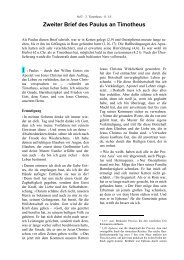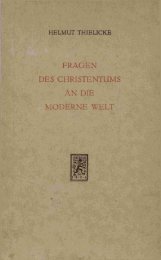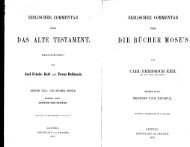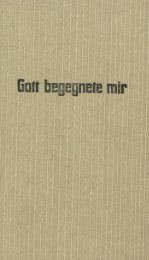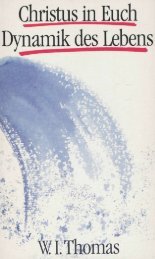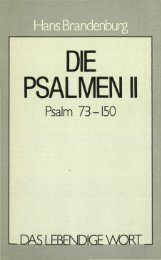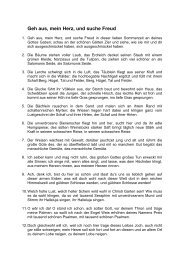Create successful ePaper yourself
Turn your PDF publications into a flip-book with our unique Google optimized e-Paper software.
●<br />
●<br />
types of the amino acids in the protein<br />
chains) could be obtained? In a process of<br />
trial and error of various sequences, most of<br />
the combinations would not transport<br />
enough oxygen, which would be lethal. Thus<br />
an evolutionary process of “gradually<br />
approaching” the right combination is<br />
excluded.<br />
Even if somehow the right molecule could be<br />
synthesized to provide for the needs of two<br />
of these stages, death would be certain (and<br />
the evolutionary experiment would end), if<br />
an inappropriate hemoglobin were utilized in<br />
the third stage.<br />
For each of these three stages, essentially<br />
different biological machinery is required. At<br />
the right time, the production has to switch<br />
from the ε chain to the γ chain, and then a<br />
third time to the β chain. How could the<br />
complex machinery necessary to control this<br />
production sequence itself arise?<br />
The only reasonable answer, and the obvious one,<br />
is that everything must have been present and<br />
fully functional from the start, in the DNA coding<br />
of the first human beings—conceived and<br />
planned by a wise Creator.<br />
Leucocytes: The leucocytes, also known as white<br />
blood cells or white blood corpuscles, are much<br />
less abundant than the erythrocytes. There are<br />
only between 4,000 and 10,000 of them in one<br />
mm 3 , and their number is variable. They increase<br />
after a meal or after physical activity. There are<br />
morphologically different kinds of leucocytes;<br />
their purpose is to defend the body against<br />
intruders, each in its own particular way, and to<br />
defend it to the death, as it were. They die by the<br />
millions wherever there is a point of entry for<br />
infection. There are about six thousand million<br />
white corpuscles in every litre of blood, one for<br />
every 600 to 1,000 red blood cells. In contrast to<br />
the latter, the leucocytes are complete cells having<br />
a nucleus as well as organelles. They are also<br />
known as granulocytes, because in large concentrations<br />
the blood plasma appears to be granular.<br />
Five types can be distinguished, three according<br />
to their ability to be stained. Sixty per cent of the<br />
leucocytes are neutrophilic granulocytes (Greek<br />
philos = friend; they are readily stained by neutral<br />
dyes), five per cent are eosinophilic (Greek<br />
eos = the rosiness of dawn; eosin is a red dye<br />
used for microscopic analysis), and two per cent<br />
are basophilic (they can be stained with basic<br />
dyes). The remaining two kinds of white blood<br />
cells are the lymphocytes (30 %) and the monocytes<br />
(3 %).<br />
The leucocyte army is an impressive team of<br />
specialists. While half of them are patrolling<br />
within the blood, the others are on external duty,<br />
guarding the tissues. Bacteria, viruses, fungi and<br />
parasites continually enter our bodies through<br />
breaches of the skin, in the air we breathe, and<br />
from food in the alimentary canal. They are<br />
recognised as enemies, and, when located, the<br />
army goes into action. The basophilic granulocytes<br />
and the lymphocytes fire chemical weapons<br />
at them. Next on the scene are the neutrophils,<br />
the eosinophils, and the monocytes. They individually<br />
surround the intruders and absorb and<br />
digest them. Remarkably, this secret army is able<br />
to clearly distinguish between friend and foe,<br />
between the body’s own substances and foreign<br />
matter.<br />
Thrombocytes: A healthy adult has between<br />
150,000 and 350,000 platelets in a cubic mm of<br />
blood. These thrombocytes have no nucleus, they<br />
are flat, and are irregularly rounded in shape.<br />
They measure between 1 and 4 µm in length,<br />
with a thickness of 0.5 – 0.75 µm, and comprise<br />
cell fragments enclosed in a membrane. Continuously<br />
replenished by the bone marrow, their<br />
average lifespan is between 5 and 11 days. They<br />
are normally inactive, but can be activated by<br />
contact with e.g. roughened surfaces, such as<br />
when a blood vessel is cut or injured, and by certain<br />
blood coagulation factors. When activated,<br />
they are able to release substances necessary for<br />
blood clotting. When blood loss commences<br />
through injury, many platelets accumulating<br />
together form a mass which “plugs” the defect.<br />
In the process, they disintegrate, releasing substances<br />
that trigger off coagulation.<br />
63




